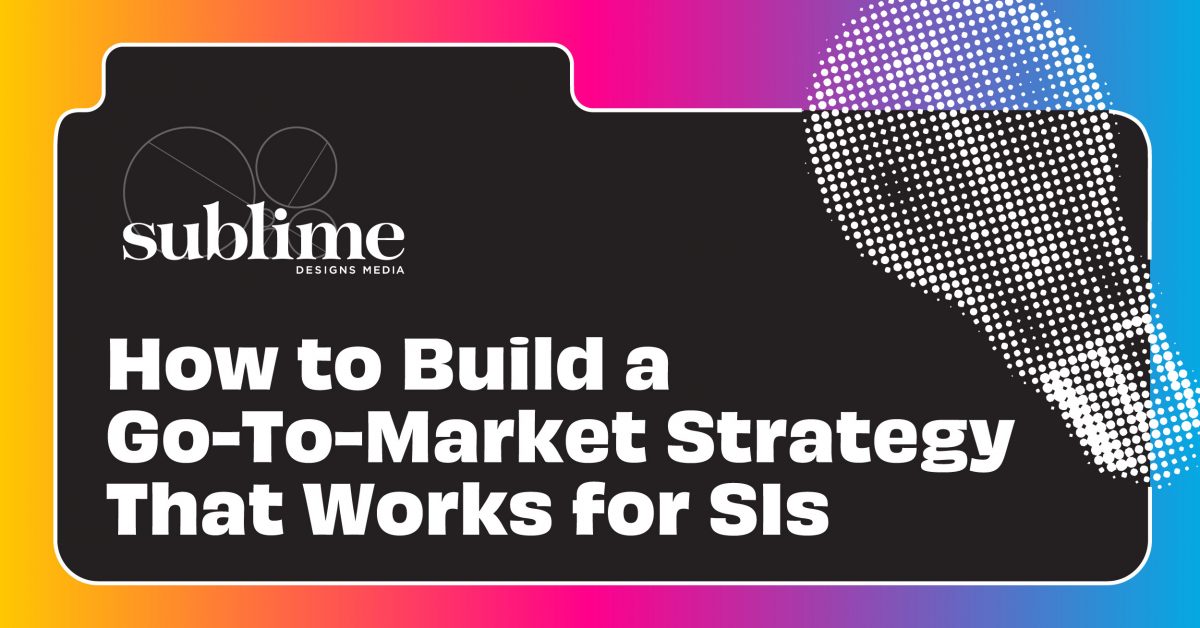Marketing a systems integrator (SI) isn’t like marketing a product. You’re selling people, process, and trust—intangibles that are hard to differentiate. And yet, SIs often take a “check-the-box” approach: launch some messaging, build a deck, and hope the leads roll in.
It doesn’t work.
After 25 years in and around consulting firms, including my time at Appirio, I’ve seen what does work. And it starts with understanding who your GTM strategy is really targeting.
Your GTM Strategy Needs to Target Three Audiences, Not One
Too many SI go-to-market efforts are built with just one audience in mind: net-new prospects. But in reality, your success hinges on reaching three key groups:
- The Channel
If you’re a Salesforce, AWS, ServiceNow, or other ecosystem partner, your most important audience might be the channel itself. Those AEs, RVPs, and alliance managers are your path to pipeline.
You need messaging, assets, and positioning that build trust, make their jobs easier, and position you as a safe bet.
What’s your elevator pitch when you bump into an AE at a partner event? If it’s not crisp, memorable, and clearly differentiated, you’re forgettable. And forgettable firms don’t get referrals.
- Prospects and Customers
Most SI leaders know they need to market to prospects—but often forget their current customers. Your customer base is your fastest path to growth. They already trust you. They already write checks.
Strong GTM programs re-engage customers and plant seeds for what’s next. They help your clients imagine the next phase of their transformation—and why you’re the right partner to lead it.
- Employees and Potential Talent
Your consultants are your brand. They’re the ones in front of clients every day. GTM isn’t just external—it’s internal, too.
A strong brand attracts top talent, keeps current employees engaged, and creates pride of place. At Appirio, we became a destination for top consultants not just because of the work, but because of the brand. People wanted to be part of it.
Your GTM approach should show who you are, what you believe, and why great people should want to join you.
Specialization Beats Generalization
Here’s another trap: trying to be everything to everyone. It’s tempting—especially for smaller firms—to cast a wide net. But building your GTM strategy around “anyone with a Salesforce org” is a recipe for noise.
You need to define your ideal customer profile—specific industries, verticals, or even sub-verticals—and own them. That doesn’t mean turning away business outside your focus areas. It means tailoring your messaging to your ICP so the right clients (and channel partners) know exactly when to call you.
As you grow, you can broaden. But early on, focus wins.
Find Your Voice or Get Lost in the Noise
SIs often say the same things:
- “We have the best people.”
- “Our methodology sets us apart.”
- “We have deep industry expertise.”
The problem? Everyone says that.
If you want to stand out, you need to dig deeper. What truly makes you different? Why do clients rave about you? Why do your people stay?
Find your unique voice—and reflect it in your pitch, your content, and every sales conversation.
Help the Channel Sell You
Don’t forget the channel. Create GTM assets that help your partners sell—solution briefs, case studies, industry POVs. Anything that helps an AE introduce you with confidence.
Make it easy for them. Be the partner they love to bring in.
Need help refining your go-to-market strategy, pitch, or brand?
We help SIs build GTM programs that actually work—for the channel, for your customers, and for the talent you need to grow.
